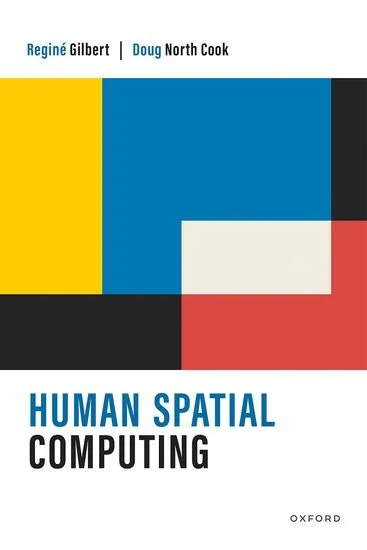Books
Globally recognized author of widely cited books on inclusive design, accessibility, and systems-level change.
Inclusive Design for a Digital World (Second Edition)
Inclusive Design for a Digital World: Designing with Accessibility in Mind (Design Thinking) Second Edition, Book Cover
Inclusive Design for a Digital World: Designing with Accessibility in Mind (Design Thinking) Second Edition
Inclusive design means creating digital products with empathy, intention, and accessibility at the core, so more people can participate fully. In this expanded edition, UX design professor and author Regine Gilbert updates her practical, global perspective on inclusive design to reflect today’s fast-changing technologies, from apps and websites to AI, VR, and AR. Accessibility is not just a checklist, it’s about rethinking how we design for those most often left out.
What You’ll Learn
Apply WCAG 2.2 and meet global accessibility standards
Navigate the European Accessibility Act (EAA) and compliance requirements
Design for visual, motor, auditory, and cognitive accessibility
Understand how AI and machine learning impact inclusion
Incorporate assistive technologies in design and testing
Build inclusive systems for apps, websites, games, and immersive tech
Conduct effective user research with diverse participants
Who This Book Is For
Designers, developers, researchers, product managers, educators, and technologists working to embed accessibility and inclusion into every stage of digital product design.
Digital Accessibility Ethics: Disability Inclusion in All Things Tech 1st Edition
Digital Accessibility Ethics: Disability Inclusion in All Things Tech, Book Cover
Digital Accessibility Ethics is a practical guide designed to end the digital exclusion of 1.3 billion disabled people worldwide, introducing the three-part Digital Accessibility Ethics Framework to help readers identify and challenge patterns of exclusion through values, actions, and critical questions. Written by 39 authors from 10 countries and one commonwealth, most of whom are disabled, the book draws on over 600 years of collective accessibility and advocacy experience, offering an ethics-driven lens that supports full digital participation while reducing legal, financial, privacy, and safety risks.
Through stories, strategies, and actionable guidance across topics like gaming, AI, smart cities, healthcare, workplace software, cybersecurity, and more, it calls on leaders and technologists to shape more inclusive digital futures. As technology and AI rapidly evolve, the ethical stakes of accessibility have never been higher, and this book provides a vital roadmap for responsible, inclusive decision-making. An accessible digital version will be available at publication.
What You’ll Learn
Understand the Digital Accessibility Ethics Framework
Explore ethics and disability across digital ecosystems
Recognize risks of inaccessible products and systems
Apply values and critical questions to real-world scenarios
Learn from global, lived-experience perspectives
Who This Book Is For
Leaders, technologists, designers, educators, policymakers, students, and anyone who creates or engages with digital content—especially those committed to building ethical, inclusive digital experiences.
Human Spatial Computing, Book Cover
Human Spatial Computing
Spatial computing goes beyond screens to integrate the physical and digital worlds through natural interfaces, haptics, virtual reality, and augmented reality. This book takes readers on a journey through the history, impact, and future of spatial computing, highlighting its transformative role in moments like the global pandemic and its potential to shape how we connect, work, and play.
With a strong focus on inclusivity, privacy, safety, and ethics, Human Spatial Computing emphasizes the responsibility of designers and technologists to create experiences that are accessible to all. Each chapter includes questions for reflection and practical activities, helping readers apply concepts to real-world contexts while exploring diverse cultural perspectives.
What You’ll Learn
Understand the foundations and evolution of spatial computing
Explore privacy, safety, and ethics from multiple perspectives
Design inclusive, accessible spatial experiences for diverse users
Examine cultural implications and global approaches to technology
Apply concepts through reflection questions and chapter activities
Who This Book Is For
Students, researchers, designers, and professionals in technology, design, and human-computer interaction who want to build more ethical, inclusive, and human-centered spatial computing experiences.
Inclusive Design for a Digital World is now available in Japanese!
Inclusive Design for a Digital World Book Cover
Inclusive Design for a Digital World - Designing with Accessibility in Mind by Regine Gilbert
What is inclusive design? It is simple. It means that your product has been created with the intention of being accessible to as many different users as possible. For a long time, the concept of accessibility has been limited in terms of only defining physical spaces. However, change is afoot: personal technology now plays a part in the everyday lives of most of us, and thus it is a responsibility for designers of apps, web pages, and more public-facing tech products to make them accessible to all. Our digital era brings progressive ideas and paradigm shifts – but they are only truly progressive if everybody can participate.
What You’ll Learn
The moral, ethical, and high level legal reasons for accessible design
Tools and best practices for user research and web developers
The different types of designs for disabilities on various platforms
Familiarize yourself with web compliance guidelines
Test products and usability best practices
Understand past innovations and future opportunities for continued improvement
Who This Book Is For
Practitioners of product design, product development, content, and design can benefit from this book.





